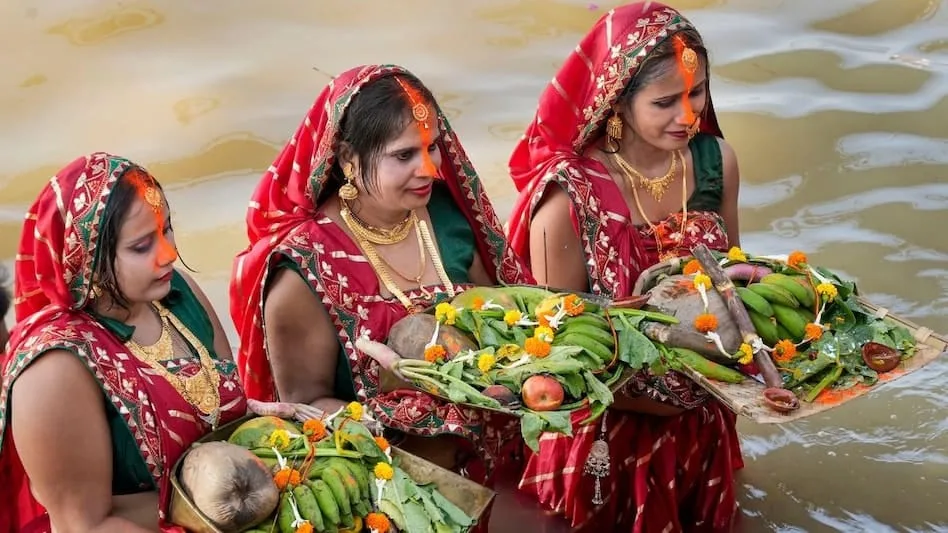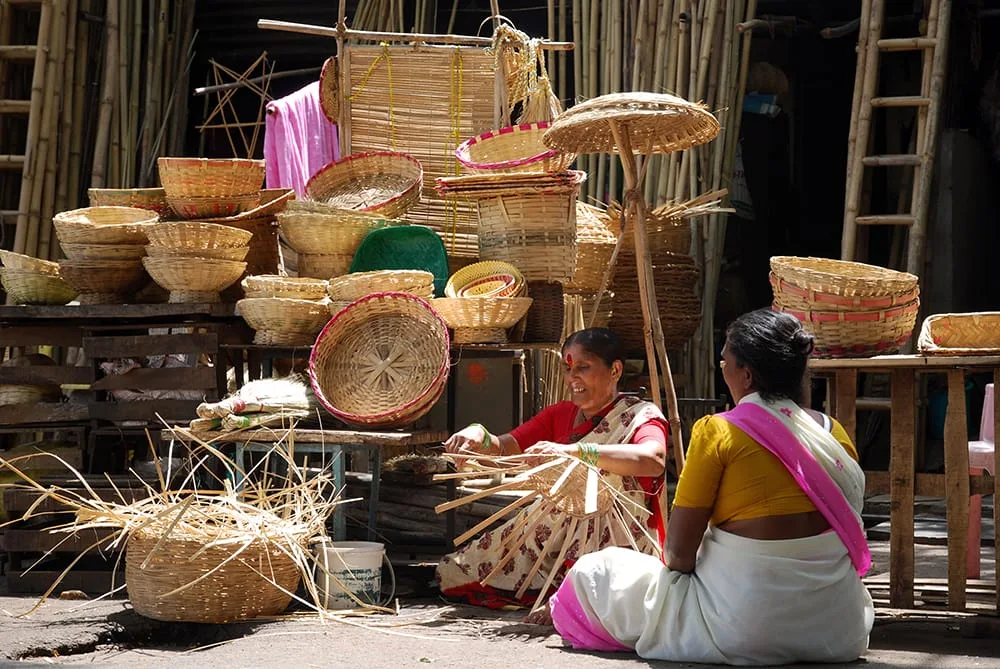Chhath Puja, a sacred festival celebrated across Bihar, Jharkhand, Uttar Pradesh, and beyond, goes beyond religious observance. Rooted in the month of Kartik (October-November), it is a time-honoured ritual of sun worship dedicated to the Bhagwan Sun (Surya) and Chhathi Maiya, encompassing social harmony, health benefits, environmental reverence, and economic empowerment for local communities.
Sun Worship in Kartik: Science and health benefits
During this time of year, the sun sits lower on the horizon at dawn and dusk, allowing for gentler UV exposure. The ritual of offering ‘arghya’ (water) to the sun during these hours maximises Vitamin D absorption, which is vital for immunity and bone strength. Early sunlight exposure also boosts serotonin levels, enhancing mood and mental health. Scientific studies confirm these health benefits, making Chhath Puja’s morning and evening practices a thoughtful blend of tradition and scientific insight.
Therapeutic benefits of standing in water

A unique aspect of Chhath Puja involves devotees standing in rivers or ponds as they pray, a practice that parallels hydrotherapy. Immersion in water reduces joint and muscle stress, improves blood circulation, and regulates body temperature. The water’s reflective surface enhances sunlight absorption, allowing devotees to gain the benefits of solar energy from multiple angles. This immersion combines physical rejuvenation with spiritual fulfilment, making the ritual both therapeutic and meaningful.
Fasting and detoxification
Fasting is integral to Chhath Puja, with devotees abstaining from food and water for extended periods. This fast activates autophagy, a cellular process that repairs damaged cells, boosts immunity and detoxifies the body. By giving the digestive system a break, fasting promotes metabolic balance and overall health. The mental discipline required for this practice enhances focus, patience, and resilience, allowing devotees to connect more deeply with themselves.
Nutritional significance of prasad

The prasad offerings, especially thekua (a sweet made from wheat flour, jaggery, and ghee), are both nourishing and symbolic. Thekua provides energy with its natural sugars and carbohydrates, while jaggery aids digestion and detoxification. Seasonal fruits, rich in vitamins and antioxidants, are also offered, supporting bodily recovery after fasting. These ingredients align with Ayurveda’s principle of eating seasonally, which harmonises the body with the environment.
Eco-Friendly Traditions: Chhath puja’s environmental stewardship
Chhath Puja practices are inherently eco-conscious, with devotees using biodegradable materials like bamboo baskets, clay lamps, and locally sourced ingredients. These sustainable choices minimise pollution and promote environmental respect, setting an example for green celebrations worldwide. Furthermore, Chhath Puja emphasises water conservation as rituals conducted by natural water bodies, reinforcing the sacredness of these resources and encouraging their preservation.
Economic impact and support for local artisans
 Chhath Puja plays a vital role in boosting the local economy. It drives demand for traditional items like bamboo baskets, earthen lamps, fruits, and cultural attire, providing an income boost for small-scale vendors and artisans. Local artisans benefit immensely as families purchase handmade goods, supporting cottage industries and preserving traditional crafts. This cyclical demand fosters job creation, strengthens the local economy, and underscores Chhath as a festival that not only honors spirituality but also uplifts livelihoods.
Chhath Puja plays a vital role in boosting the local economy. It drives demand for traditional items like bamboo baskets, earthen lamps, fruits, and cultural attire, providing an income boost for small-scale vendors and artisans. Local artisans benefit immensely as families purchase handmade goods, supporting cottage industries and preserving traditional crafts. This cyclical demand fosters job creation, strengthens the local economy, and underscores Chhath as a festival that not only honors spirituality but also uplifts livelihoods.
A festival for today and the future
Chhath Puja exemplifies a harmonious blend of faith, health, and ecological awareness. Its rituals—from sun worship and standing in water to eco-friendly practices—highlight a commitment to reducing carbon footprints and embracing green energy ideals. In today’s era, where sustainability and wellness are paramount, Chhath Puja’s age-old traditions serve as a reminder of the wisdom embedded in cultural practices.
By participating in Chhath Puja, we honour an ancient science of health, environmental stewardship, and economic support for local communities. This festival continues to inspire future generations, reminding us of our responsibilities to ourselves, our communities, and our planet. Through Chhath Puja, we uphold a legacy that celebrates the interconnectedness of nature, spirituality, and society.
This post was originally published on here







